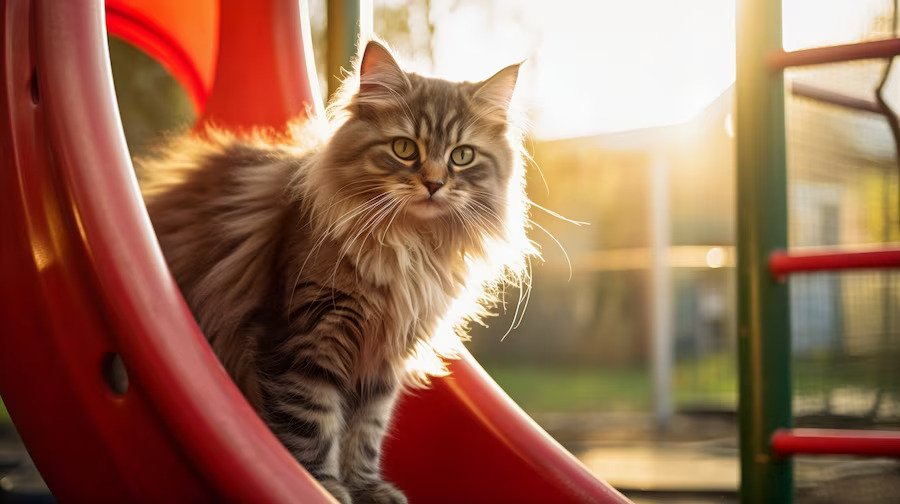Training a cat to stay within cat proof fencing requires patience, understanding, and a strategic approach. While cats are independent by nature, with the right techniques, you can teach them to enjoy the safety of their designated outdoor space.
In this article, we’ll explore effective training methods that help your feline friend embrace the boundaries of cat-proof fencing while still enjoying the outdoors.
1. Understanding Your Cat’s Behaviour
Before embarking on any training endeavor, it’s essential to understand your cat’s behavior. Cats are curious creatures, and their desire to explore their surroundings is hardwired. Respect their natural instincts while guiding them to respect the boundaries you’ve set within the cat-proof fencing.
2. Creating A Positive Association
Start by introducing your cat to the cat-proofed area. Keep the experience positive by associating it with things your cat loves. Place their favorite toys, a cozy bed, and even some treats within the enclosure. Spend time with your cat in the enclosed space to show that it’s a safe and enjoyable environment.
3. Gradual Exposure
Don’t rush the process. Gradually expose your cat to the enclosed area. Start by leaving the door open and letting them explore at their own pace. Use positive reinforcement, like treats or praise, whenever they venture into the space. Over time, extend their time within the enclosure, rewarding them for their willingness to stay within the boundaries.
4. Harness And Leash Training
Consider harness and leash training as an additional layer of safety. Introduce your cat to a comfortable harness and attach a leash. Allow them to explore under your supervision while within the cat-proofed area. This helps them associate the enclosed space with freedom and exploration.
5. Positive Reinforcement
Positive reinforcement is a key element in training cats to stay within cat-proof fencing. When your cat voluntarily remains within the boundaries, reward them with treats, affection, or playtime. Conversely, avoid punishing your cat for attempting to leave the designated area, as this can create anxiety and reluctance to explore further.
6. Consistency And Routine
Cats thrive on routine, so establish a consistent schedule for outdoor time within the cat-proof fencing. Regularity helps your cat feel secure and reduces their inclination to test the boundaries. Over time, they’ll come to associate specific times with outdoor exploration, making the training process smoother.
7. Sensory Enrichment
Enhance the appeal of the cat-proofed area by incorporating sensory enrichment. Add plants, cat-safe grass, and toys that stimulate your cat’s senses. A stimulating environment reduces the desire to wander outside the boundaries in search of sensory experiences.
Conclusion
Training your cat to stay within cat-proof fencing is an investment in their safety and well-being. By respecting their natural instincts while gently guiding them to respect boundaries, you can create a harmonious balance between their desire to explore and your need for their protection.
Remember that “cat-proof fencing” isn’t just about the physical barrier; it’s about fostering a positive association with the enclosed space. With patience, consistency, and positive reinforcement, you can help your feline friend enjoy the outdoors within the safe confines of their designated area.
Read Also:






















